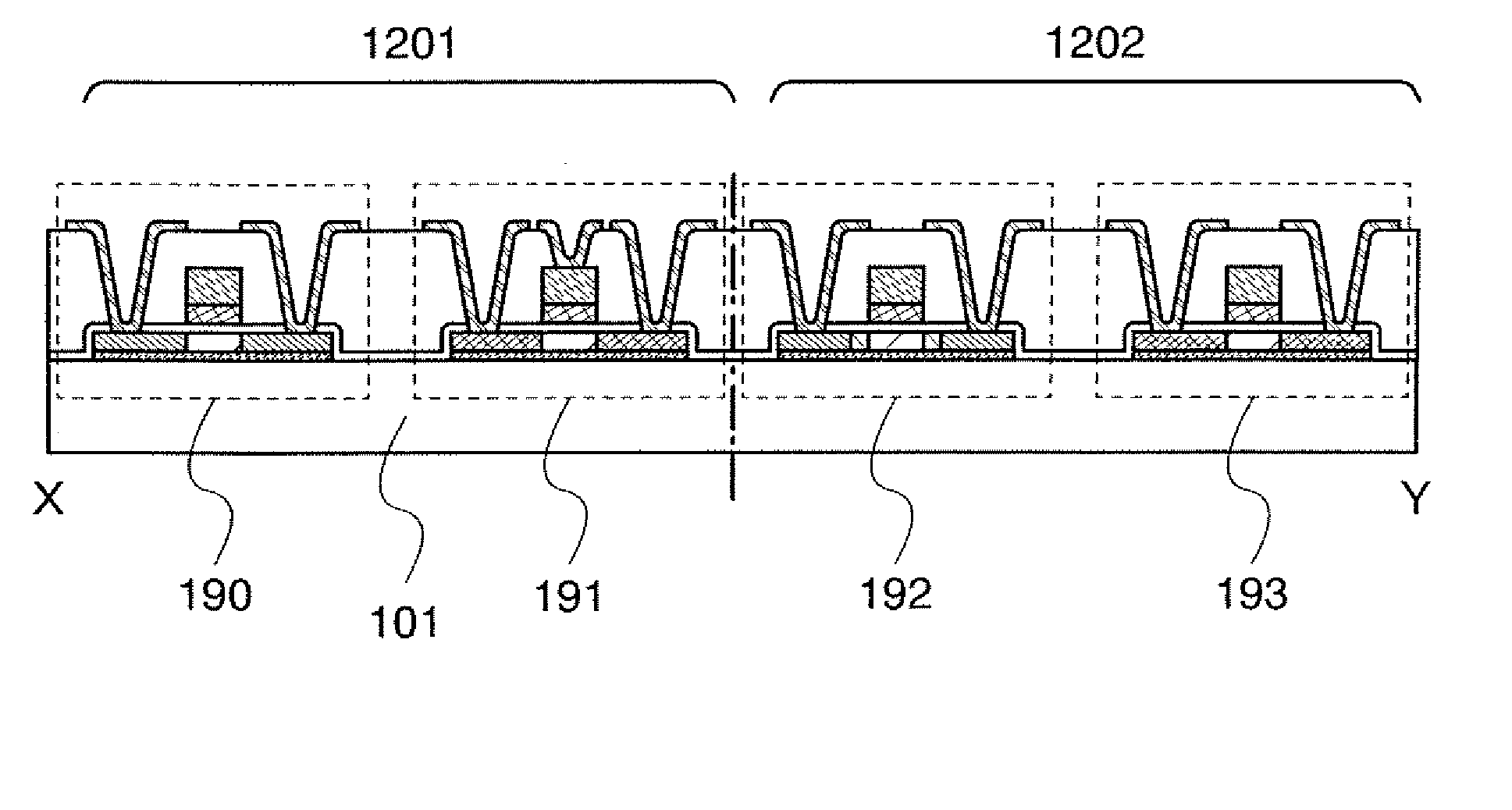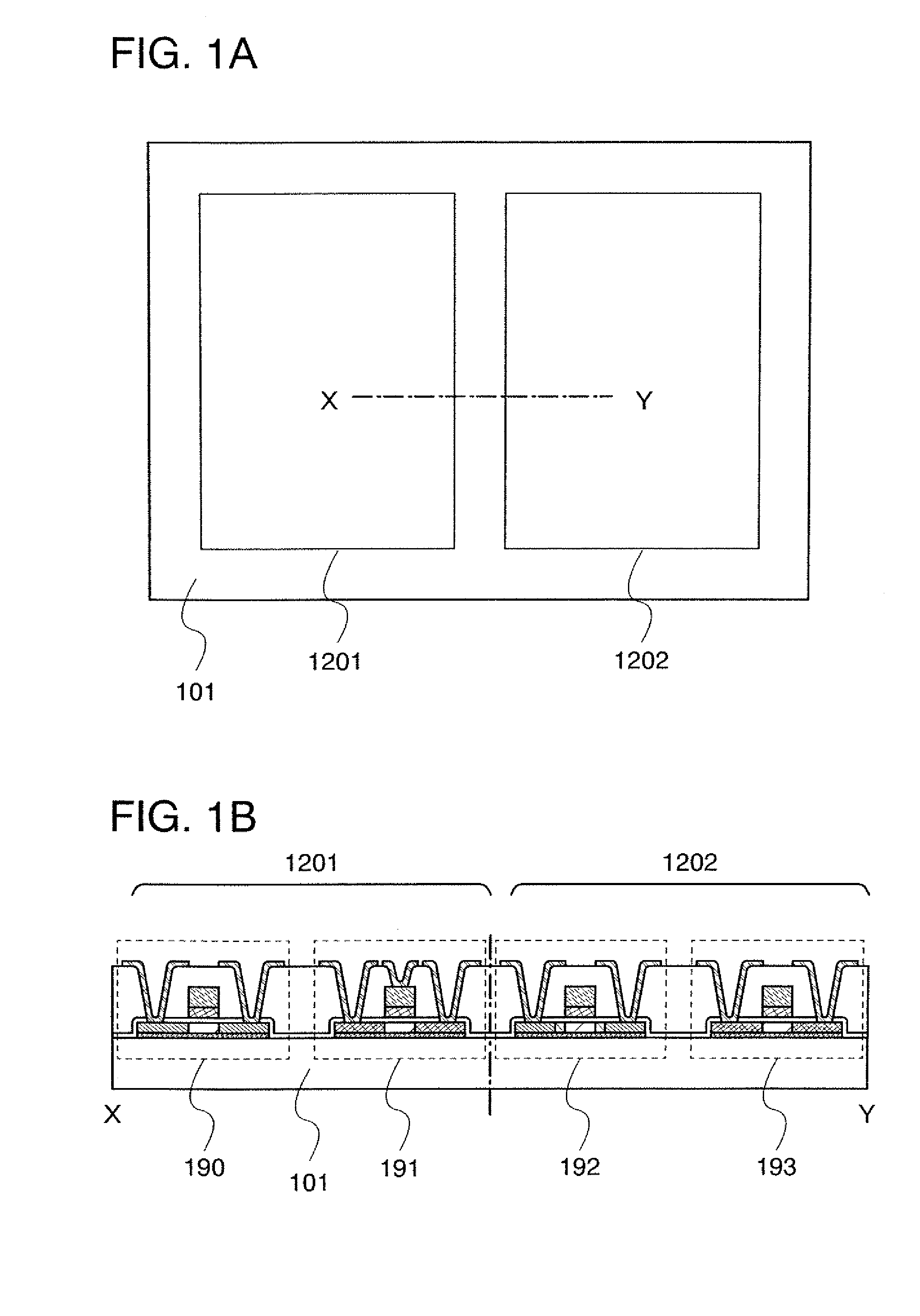Semiconductor device and manufacturing method thereof
a semiconductor and manufacturing method technology, applied in semiconductor devices, instruments, optics, etc., can solve the problems of difficult to employ the above-described process for a display device, and achieve the effect of improving mobility, extremely easy to achieve, and improving mobility
- Summary
- Abstract
- Description
- Claims
- Application Information
AI Technical Summary
Benefits of technology
Problems solved by technology
Method used
Image
Examples
embodiment mode 1
[0037]A method for manufacturing a semiconductor device of the present invention is described with reference to FIGS. 1A to 6C.
[0038]A method for providing a single-crystal semiconductor layer over a substrate having an insulating surface is described with reference to FIGS. 2A to 2E and FIGS. 3A to 3D.
[0039]A semiconductor substrate 108 shown in FIG. 2A is cleaned, and ions which are accelerated by an electric field are introduced into the semiconductor substrate 108 from the surface thereof to reach a predetermined depth to form a weakened layer (a separation layer) 110. Ion irradiation is performed in consideration of the thickness of a single-crystal semiconductor layer which is formed over a base substrate. The thickness of the single-crystal semiconductor layer is preferably equal to or greater than 1 μm and equal to or less than 3 μm. Accelerating voltage for irradiating the semiconductor substrate 108 with ions is set in consideration of such a thickness.
[0040]A p-type or n-...
embodiment mode 2
[0107]In this embodiment mode, an example of a semiconductor device having a display function, to which the present invention is applied, is described with reference to FIGS. 7A and 7B.
[0108]FIG. 7A shows an active matrix display device. A pixel portion 1002 where a plurality of pixel circuits are arranged in matrix, a data driver 1003, and a scan driver 1004 are formed over a base substrate 1001. Further, a top surface of the base substrate 1001 is hermetically sealed with a counter substrate (a sealing substrate) 1005. A control signal, an image signal, and driving power which are necessary for driving a display device are supplied from outside through a flexible printed circuit (FPC) 1006. In addition, FIG. 7B is a cross-sectional view taken along A-B in FIG. 7A.
[0109]FIG. 7B shows a cross section of an active matrix display device when a pixel portion is formed using an electroluminescence (EL) element.
[0110]The data driver 1003 and the scan driver 1004 each perform processing f...
embodiment mode 3
[0134]In the semiconductor device of the present invention, a thin single-crystal semiconductor layer 150 and a thick single-crystal semiconductor layer 160 are formed over the base substrate 101 by being attached thereto; however, there is the case where part of a separation plane due to an ion irradiation step is left remaining on an outermost surface of each single-crystal semiconductor layer. Since the separation plane is a region which is in contact with a region where the weakened layer (the separation layer) is formed by hydrogen ion irradiation, the separation plane has flatness inferior to the surface of a normal single-crystal semiconductor layer. Therefore, it is necessary to improve the surface condition of the separation plane in order to prevent defects in subsequent steps.
[0135]As a typical method for removing such a separation plane, there is surface polishing by chemical mechanical polishing (CMP) as well as a method in which the separation plane is oxidized by surf...
PUM
| Property | Measurement | Unit |
|---|---|---|
| thickness | aaaaa | aaaaa |
| thickness | aaaaa | aaaaa |
| thickness | aaaaa | aaaaa |
Abstract
Description
Claims
Application Information
 Login to View More
Login to View More - R&D
- Intellectual Property
- Life Sciences
- Materials
- Tech Scout
- Unparalleled Data Quality
- Higher Quality Content
- 60% Fewer Hallucinations
Browse by: Latest US Patents, China's latest patents, Technical Efficacy Thesaurus, Application Domain, Technology Topic, Popular Technical Reports.
© 2025 PatSnap. All rights reserved.Legal|Privacy policy|Modern Slavery Act Transparency Statement|Sitemap|About US| Contact US: help@patsnap.com



